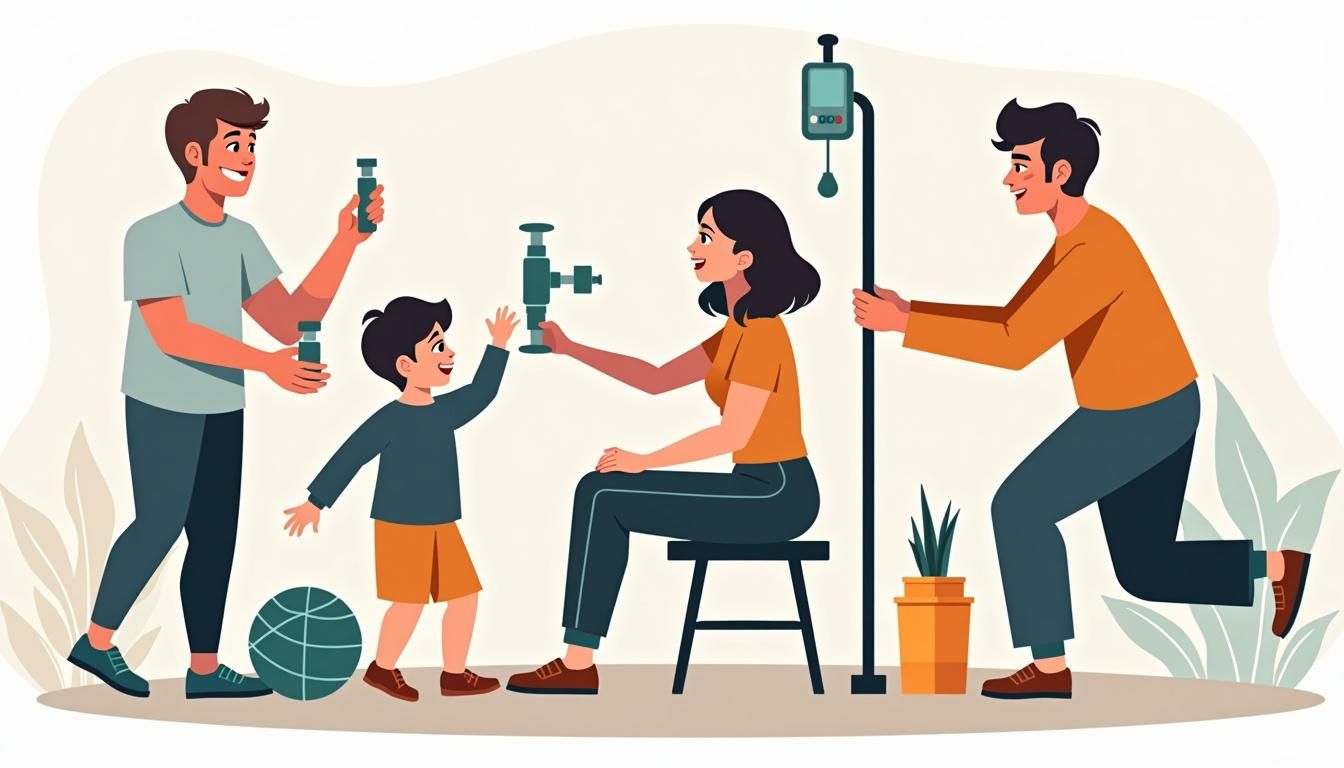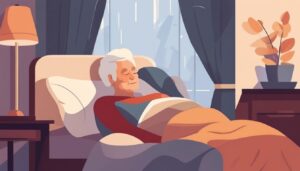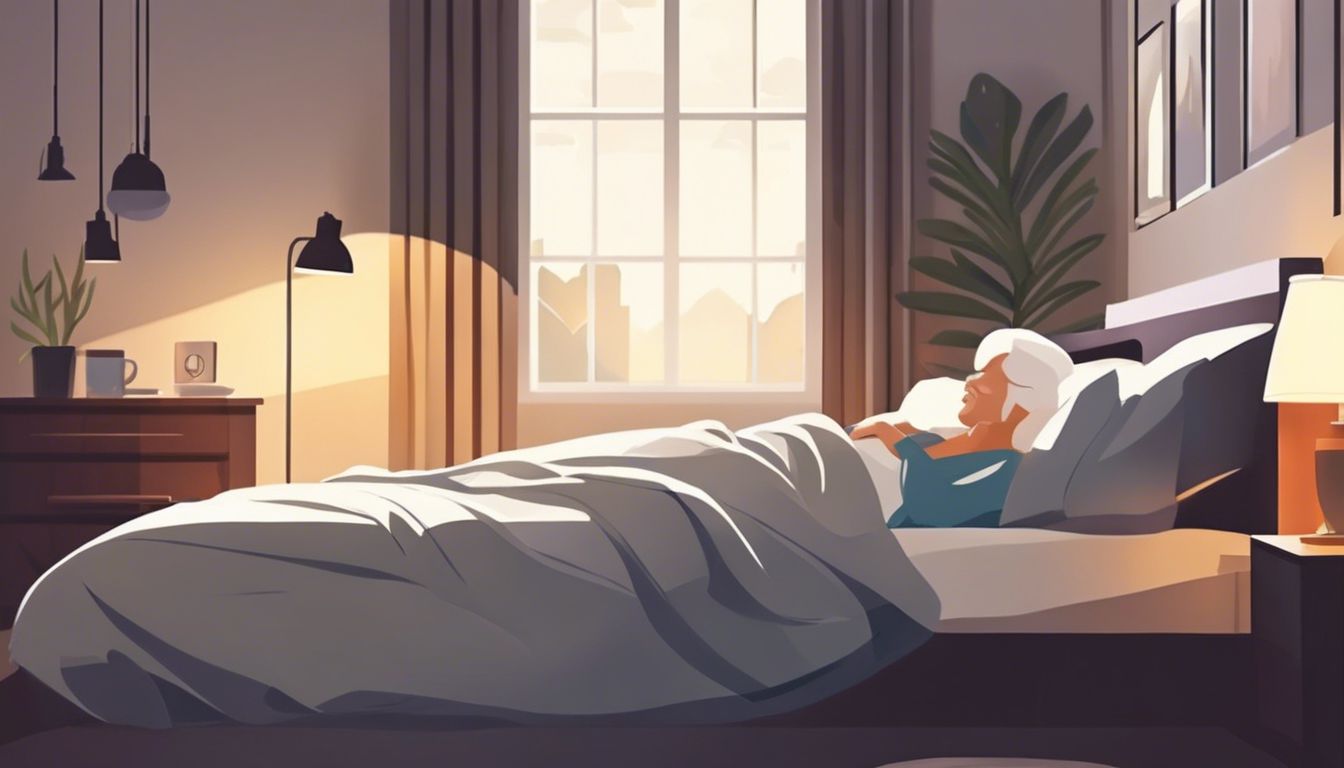Seniors with mobility issues often struggle with daily living activities. Occupational therapy offers solutions to improve their quality of life and independence. This blog will explain how occupational therapists can help seniors perform tasks like dressing and bathing more easily.
Read on and discover practical tips for better daily living!
📋✅
- Occupational therapy helps seniors do daily tasks like dressing and bathing easier. It makes them more independent by using special tools and exercises.
- Therapists teach seniors new ways to move safely, reducing the risk of falls. They recommend adaptive equipment like grab bars and ramps.
- Simple exercises improve strength and balance. Examples include chair squats, heel raises, and toe taps.
- Home modifications ensure safety. Changes include removing rugs, adding railings on stairs, and improving lighting.
- Personal care tips help with grooming, eating, and self-care. This fosters confidence in seniors’ everyday routines.
Understanding Occupational Therapy

Occupational therapy helps people do daily tasks better… It focuses on improving motor skills, attention, and strength.
Definition and scope
Occupational therapy is a healthcare branch. It helps people reach their goals and improve life despite challenges. Therapists assist seniors with mobility issues in performing daily activities (ADLs) like showering, dressing, eating, and using the bathroom.
The focus of OT includes promoting independence and preventing falls. By connecting physical tasks with daily routines, therapists tailor support to individual needs. This enhances overall well-being…
keeping seniors active boosts health and self-confidence.
Differentiation from physical therapy
Physical therapy (PT) improves strength, balance, and range of motion. It helps with muscle function and physical impairments. PT uses exercise to restore movement.
Occupational therapy (OT) promotes independence in daily activities like dressing and bathing. OT also focuses on the mind. It helps with cognitive functions such as memory and problem-solving.
OTs create personalized treatment plans for each senior’s needs. They ensure older adults can perform their activities of daily living (ADLs). Next, we will explore how occupational therapists enhance daily life tasks….
Role of Occupational Therapy in Enhancing Daily Living
Occupational therapy helps seniors live more independently. It also trains them to move safely, reducing the risk of falls.
Promoting independence in daily activities
Seniors with mobility issues can still lead independent lives. Occupational therapy offers them the tools and skills to do so.
- Teaching New Techniques: Seniors learn new ways to perform daily tasks, like using a reaching tool to grab items from high shelves.
- Preventing Falls: Therapists help seniors practice balance exercises, reducing the risk of falls.
- Adaptive Equipment: Using items like grab bars in the bathroom can make bathing safer and easier.
- Strength Training: Simple exercises improve muscle strength, making it easier to move around and perform tasks.
- Vision-Aid Tools: Magnifying glasses or better lighting can assist those with vision loss in daily activities.
- Personal Care Assistance: Tips for dressing, grooming, and eating independently foster self-reliance.
- Home Modifications: Small changes like removing rugs or installing ramps enhance safety and accessibility at home.
These steps ensure that seniors stay active and confident in their daily lives.
Preventing falls through mobility training
Occupational therapy helps seniors avoid falls, which can lead to serious injuries or even death. Here’s how it works:
- Assess Living Spaces: Therapists evaluate homes for safety. They recommend grab bars, shower seats, and slip-resistant floors.
- Teach Proper Body Mechanics: Seniors learn to move safely during daily activities. This reduces strain and prevents fatigue.
- Implement Exercise Routines: Custom exercises improve strength and balance. Tai Chi is a popular option.
- Promote Active Lifestyles: Staying active keeps muscles strong. It lowers the risk of falls.
- Educate on Fall Prevention: Therapists teach how to avoid risky situations. They give tips on safe walking and getting up from chairs.
Next, we’ll explore adaptive equipment for safer living spaces…
Occupational Therapy Techniques for Seniors
Seniors can use special tools to make daily tasks easier… They also get exercises to improve strength and balance.
Adaptive equipment and modifications for safer living spaces
Occupational therapy helps seniors stay safe at home. It uses tools and changes to make living easier.
- Grab Bars: Install grab bars in bathrooms. They prevent falls.
- Widened Doorways: Widen doorways for easy wheelchair access.
- Ramps: Add ramps instead of stairs. This aids those with walkers or wheelchairs.
- Stair Lifts: Place stair lifts for multi-story houses, making upstairs access simpler.
- Bright Stickers on Appliances: Use bright stickers on appliances. They help seniors with dementia know controls.
- Improved Lighting: Ensure good lighting. It makes moving around safer and reduces falls.
- Walkers and Canes: Choose the right walkers or canes. Occupational therapists help pick the best ones.
- Wheelchairs: Select suitable wheelchairs with a therapist’s guidance, ensuring proper fit and comfort.
- Reachers: Provide reachers for grabbing items from high shelves without strain.
These tools and changes boost safety and ease daily tasks for seniors with mobility issues.
Exercise routines to improve strength and balance
Seniors need strong muscles and good balance to stay independent. These exercise routines help them improve strength and stability:
- Chair Squats: Sit in a chair, stand up, then sit back down. Do this 10-15 times.
- Heel Raises: Stand behind a chair, hold onto it, lift heels off the ground, then lower them. Repeat 10-20 times.
- Toe Taps: Sit in a chair with feet flat on the floor, lift toes while keeping heels down, then lower toes. Perform this 15-20 times.
- Leg Lifts: Sit in a chair; lift one leg straight out in front of you slowly, then lower it. Switch legs after 10 lifts each.
- Standing Side Leg Raises: Stand behind a chair for support; raise one leg to the side without bending the knee and slowly bring it back down. Do this for 10-15 repetitions per leg.
- Seated Marching: While sitting comfortably in a chair, lift knees as if marching in place for about 1 minute.
- Wall Push-Ups: Stand facing a wall with hands against it at shoulder height; bend elbows to bring chest toward the wall and push back out again—repeat for 10-15 reps.
Each routine focuses on different muscle groups which helps seniors build better mobility skills necessary for daily living activities.
Innovative Mobility Solutions for Seniors with Severe Physical Limitations
Adaptive equipment helps seniors with severe physical limitations. They use devices like electric wheelchairs and adjustable beds—these boost comfort. Walk-in tubs reduce fall risk during bathing, fostering independence.
Exercise routines cater to individual needs. Physical health improves through personalized stretches and gentle activities like tai chi or chair yoga. Fine motor skills enhance, allowing engagement in hobbies such as painting or knitting, improving mood and emotional well-being.
Caregivers ensure safe living spaces by installing grab bars in bathrooms and railings along stairs. Vision impairments are managed with larger print on daily items—this reduces stress and anxiety.
Charter Senior Living offers custom occupational therapy interventions—they assess each resident’s needs for better care plans. The focus remains on maintaining mobility aids that assist in daily tasks while enhancing life satisfaction.
Conclusion
Occupational therapy can make a big difference for seniors with mobility issues. It helps them stay independent and safe. By using special tools and exercises, therapists improve their strength and balance.
This reduces the risk of falls significantly. The result? A better quality of life for our loved ones.
For more detailed insights on enhancing mobility, visit our page on innovative mobility solutions for seniors with severe physical limitations.
FAQs
1. What is occupational therapy and how can it help seniors with mobility issues?
Occupational therapy helps seniors manage daily activities like personal hygiene, self-care, and physical activities. It uses assistive devices to improve mobility and reduce risks of falls.
2. How does occupational therapy address mental health in seniors?
Occupational therapists offer counseling for depression, social isolation, and other mental health issues. They use cognitive-behavioral therapy to boost mental well-being and self-esteem.
3. Can occupational therapy aid in managing chronic conditions?
Yes, it helps manage chronic pain from conditions like Parkinson’s disease or joint replacements by teaching coping strategies and stress reduction techniques.
4. How does occupational therapy support cognitive abilities in older adults?
Therapists work on cognitive rehabilitation to slow cognitive decline seen in Alzheimer’s disease or other forms of dementia. They focus on enhancing decision-making skills and overall cognition.
5. Does occupational therapy promote social engagement for the elderly?
Absolutely! Occupational therapists encourage social connections through goal-setting activities that enhance psychological well-being—helping reduce loneliness among seniors.
6. What role do healthcare professionals play in providing continuity of care through occupational therapy?
Healthcare providers—including skilled nursing staff—coordinate with respiratory therapists to ensure comprehensive evaluation during each session… promoting holistic care for the elderly facing various chronic conditions.









